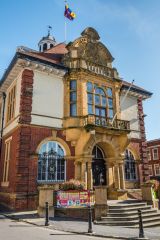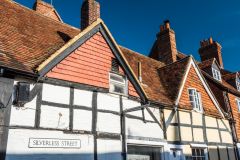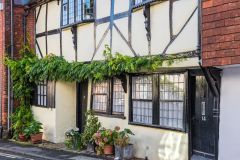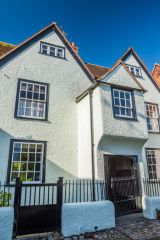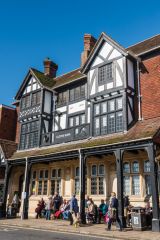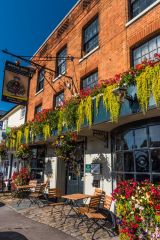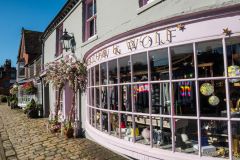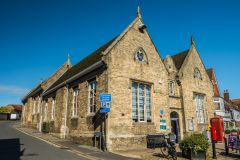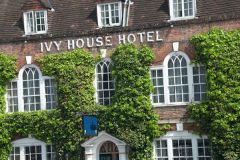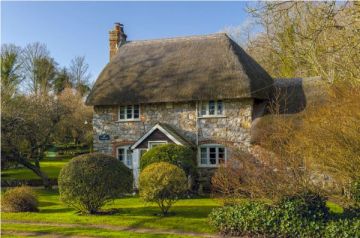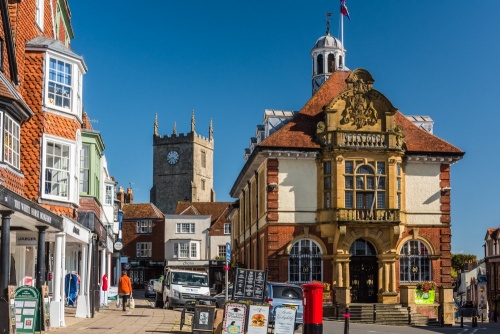
Marlborough is an attractive market town on the River Kennet about 10 miles south of Swindon. The town is known for its broad High Street, the second widest in England, and for its large number of attractive 17th-century buildings. The town's name is thought to come from the word 'marl', a medieval term for the chalk that underlies the town.
History
The earliest sign of human habitation in what is now Marlborough is a Bronze Age burial mound in the grounds of Marlborough College. The mound has been carbon-dated to around 2,400 BC, meaning that it was erected at roughly the same time as the famous conical mound of Silbury Hill five miles to the west.
The mound is known locally as Merlin's Barrow from the tradition that it marks the burial place of the wizard Merlin of Arthurian legend. That same tradition suggests that the town takes its name from 'Merlin's Barrow', though this seems very unlikely. The town motto supports this tradition in the words 'Ubi nunc sapientis ossa Merlini', which translates as 'Where now are the bones of wise Merlin?'.
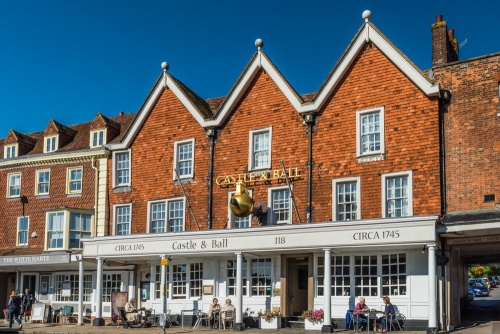
The Romans set up a camp they called Cunetio at Mildenhall, just east of the present town. The largest hoard of Roman coins ever found in Britain was discovered there in 1978.
By the late Saxon period a settlement was established at what is now The Green, east of High Street.
The real transformation of Marlborough as a major settlement came after the Norman invasion. In 1067 William the Conqueror built a motte and bailey castle, using Merlin's Barrow as the motte for his timber fortification. William established a royal mint. Coins minted here show the name Maerlebi or Maerleber. The castle was rebuilt in stone around 1175.
Around the same time, St Peter's Church was built to serve the castle garrison and the growing settlement that sprang up near it.
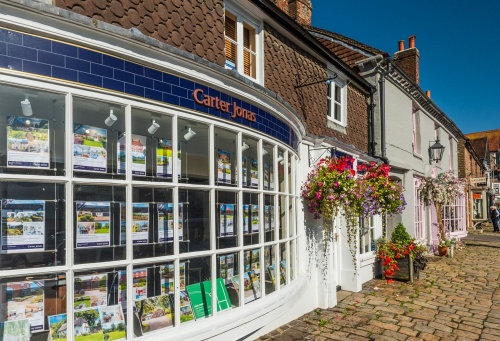
William I also established Savernake Forest as a royal hunting ground. It was such a popular area to hunt that Marlborough Castle became a royal residence more than a simple defensive structure. Numerous monarchs stayed here, including Henry I and Henry II. King John was married at Marlborough Castle and established a royal treasury here.
King John's greatest contribution, however, came in 1204 when he granted Marlborough a borough charter, with the right to hold weekly markets and an annual fair. The markets continue to the present day.
The Statute of Marlborough
King John was not the only monarch to be married in Marlborough; Henry III did the same and held Parliament here in 1267. That Parliament passed one of the most important statutes in English law, the Statute of Marlborough, which limited the King's ability to seize land and prevented anyone from seizing their neighbour's goods in reparation for an alleged wrong without the express permission of the Court. The Statute of Marlborough is the oldest statute in English law which has never been repealed.
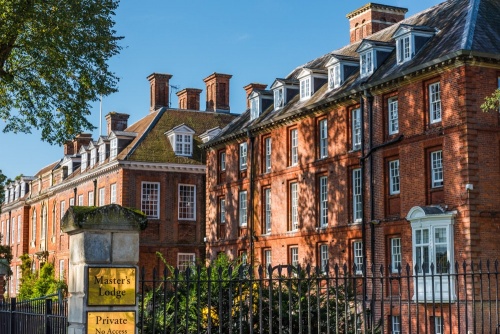
The castle eventually fell out of favour and was allowed to lapse into disrepair by the end of the 14th century. Stones from the decaying building were used to repair St Peter's Church.
It was at St Peter's Church that Thomas Wolsey was ordained as a priest in 1498. Wolsey would go on to become a Cardinal, archbishop of York, and Lord Chancellor of England under Henry VIII.
Civil War Siege
Marlborough was staunchly on the side of Parliament in the Civil War. In fact, Marlborough was considered 'the most notoriously disaffected of all that Country'. In late 1642 King Charles sent a force of 400 cavalrymen under Lord Digby to capture the town. The townsfolk, led by Colonel Ramsay, refused to surrender.
The Royalists were able to infiltrate the town, and Colonel Ramsay and his men sought refuge in St Mary's Church, where the tower still bears the scars of Royalist bullets. The Parliamentarians were forced to surrender and some 120 men were marched away in chains. The town was burned and looted, but much worse was to follow a few years later.
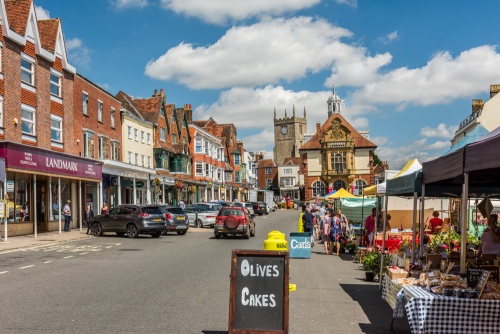
The Great Fire
On 28 April 1653, a fire started in a tanner's yard and with astonishing speed quickly engulfed the town. Within a few hours the Guildhall, St Mary's Church, the County Armoury and some 244 houses were destroyed in the flames.
Thankfully, Oliver Cromwell remembered Marlborough's support for the Parliamentary cause during the Civil War. Cromwell sent out an appeal for funds to help rebuild the town. The appeal was read in churches across the land, and enough money was generated that the town was swiftly rebuilt. The old medieval buildings destroyed in the blaze were replaced with fashionable brick and timber buildings, giving Marlborough its distinctive appearance.
During the rebuilding the High Street was widened to its present state, making it the widest in England after Stockton-on-Tees. The wide space in the centre of the street makes it ideal for the weekly markets.
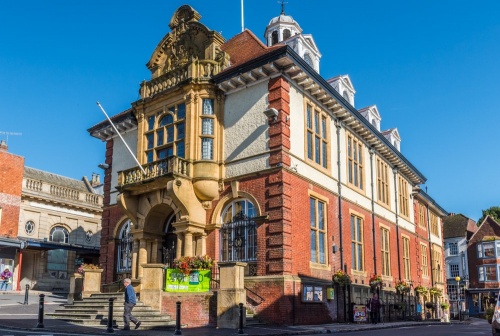
Marlborough School
In 1843 a group of high-ranking Church of England clergymen founded a school to educate the sons of Anglican clergy. They leased the Castle Inn in Marlborough, a former coaching inn on the London to Bath coach road. The new school opened in August 1843 with 199 students, and within five years there was an enrolment of 500.
Over the next century, Marlborough School became one of the leading boarding schools in England, arguably just behind Eton and Winchester in prestige. The school is now co-educational and attracts students from all backgrounds, not simply the children of clergy.
In the grounds of Marlborough School is a white horse, cut into the chalk hillside in 1804 by students of Mr Greasley's Academy on High Street (now a hotel).
Historical Attractions
Merchant's House
After the Great Fire of 1653 destroyed much of Marlborough, a wealthy silk merchant named Thomas Bayly built a new brick and timber dwelling on the northern side of High Street. Bayly and his descendants created a wonderful example of a merchant's town house, with richly panelled rooms, colourful wall paintings and a superb oak staircase.
The 17th-century house has been restored by a charitable trust and now offers visitor's a glimpse into the world of a successful merchant and his family. The highlight is the staircase, a wonderful example of Restoration craftsmanship. The staircase walls feature painted balustrades, one of the only examples of this kind of decorative painting in England. Behind the house is a typical 17th-century town house garden.
More on the Merchants House >>
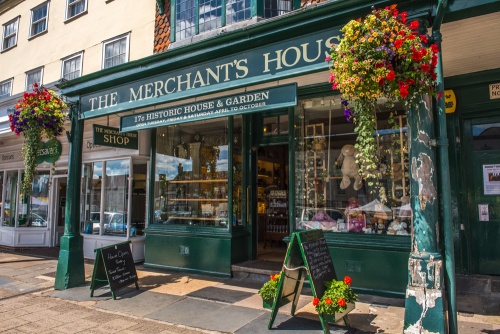
St Peter's Church
At the western end of High street stands St Peter's Church, dating to at least the 12th century. It was here that Thomas Wolsey was ordained in 1498. The church is now redundant but has been transformed into an active community cafe, craft market, and event venue.
Historical highlights include the poignant wall monument to the three children of Sir Nicholas Hyde, who all died within a month in 1626.
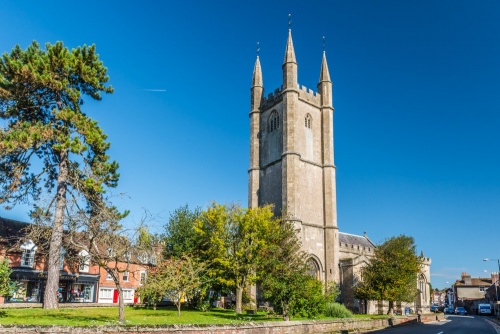
St Mary's Church
At the eastern end of High Street, behind the town hall, is St Mary's Church, begun in the 12th century but rebuilt after it was badly damaged in the Great Fire of 1653. It was here that the Parliamentarian defenders of Marlborough retreated during the Civil War siege of the town.
Set into the west wall of the nave is a 3rd-century Roman carving of the goddess Fortuna, brought here from the Roman station at Cunetia (Mildenhall). Near the Roman carving are several 12th-century corbel heads, three depicting men with prominent moustaches and another depicting a grotesque beast.
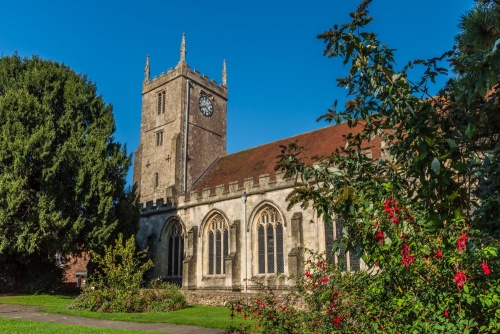
Savernake Forest
Immediately south and south-east of Marlborough stretches Savernake Forest, the former royal hunting forest established by William the Conqueror. A network of walking trails dissect the forest, including the Grand Avenue, laid out by Capability Brown for the owners of Tottenham House, a stately home at the south-eastern extremity of the forest.
Savernake is known for its ancient oak trees, including the Big Belly Oak, thought to be as much as 1,100 years old. which is an exceptional age for an oak.
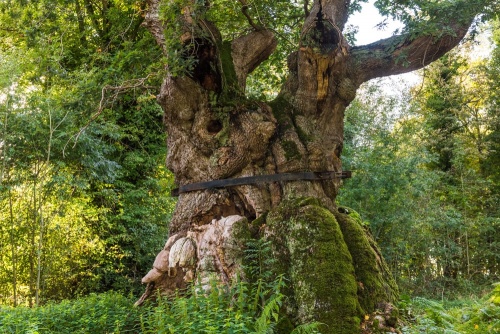
Avebury
Five miles west of Marlborough is the World Heritage Site of Avebury. The village of Avebury grew up partly inside a Bronze Age henge, or earthwork bank and ditch. The henge forms part of a huge complex of prehistoric sites including several stone circles, a stone avenue, and other ancient ceremonial sites.
Behind the parish church is Avebury Manor, an Elizabethan mansion now owned by the National Trust. The Manor was once owned by the archaeologist Alexander Keillor, heir to the Keillor marmalade fortune, who did much to investigate prehistoric sites in the area.
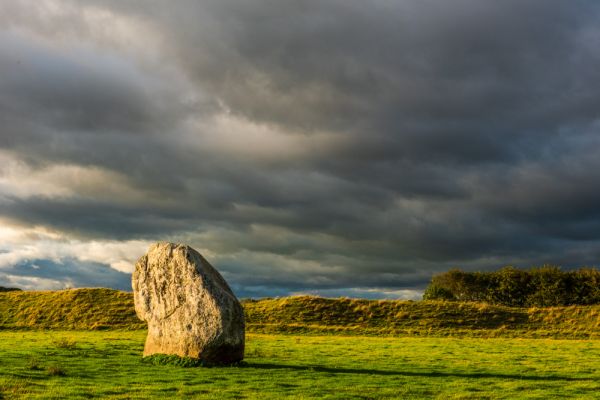
Silbury Hill
One of those sites is Silbury Hill, the largest manmade structure in Europe (in terms of volume) and larger than the Great Pyramid. This strange conical hill rises from the level plain like a beacon, but why was it built? Archaeologists have been unable to find any burials, so were are left to assume that it fulfilled a ceremonial function, but no one knows exactly what that function was.
Getting There
Marlborough is at the junction of the A4, A346 and A345 roads about 10 miles south-east of Swindon and 24 miles north of Salisbury. There is short-term paid parking on High Street - though it can be hard to find a parking space on market days. Much easier is the main visitor pay and display parking area on George Lane (B3052), which runs parallel to High Street one block to the south.
About Marlborough
Address: A4,
Marlborough,
Wiltshire,
England
Attraction Type: Town
Location: At the junction of the A4, A346 and A345, 10 miles south-east of Swindon. Paid parking on George Lane or the High Street.
Website: Marlborough
Location map
OS: SU187690
Photo Credit: David Ross and Britain Express
POPULAR POSTS
HERITAGE
 We've 'tagged' this attraction information to help you find related historic attractions and learn more about major time periods mentioned.
We've 'tagged' this attraction information to help you find related historic attractions and learn more about major time periods mentioned.
Find other attractions tagged with:
NEARBY HISTORIC ATTRACTIONS
Heritage Rated from 1- 5 (low to exceptional) on historic interest
The Merchant's House Marlborough - 0.1 miles (Historic Building) ![]()
Marlborough, St Peter's Church - 0.2 miles (Historic Church) ![]()
Marlborough, St Mary's Church - 0.2 miles (Historic Church) ![]()
Ogbourne St Andrew's Church - 2.1 miles (Historic Church) ![]()
Savernake Forest - 2.7 miles (Countryside) ![]()
Ogbourne St George Church - 3.6 miles (Historic Church) ![]()
Avebury Sanctuary - 4.3 miles (Prehistoric Site) ![]()
West Kennet Avenue - 5.1 miles (Prehistoric Site) ![]()
Nearest Holiday Cottages to Marlborough:
Marlborough, Wiltshire
Sleeps: 6
Stay from: £669 - 2657
More self catering near Marlborough
